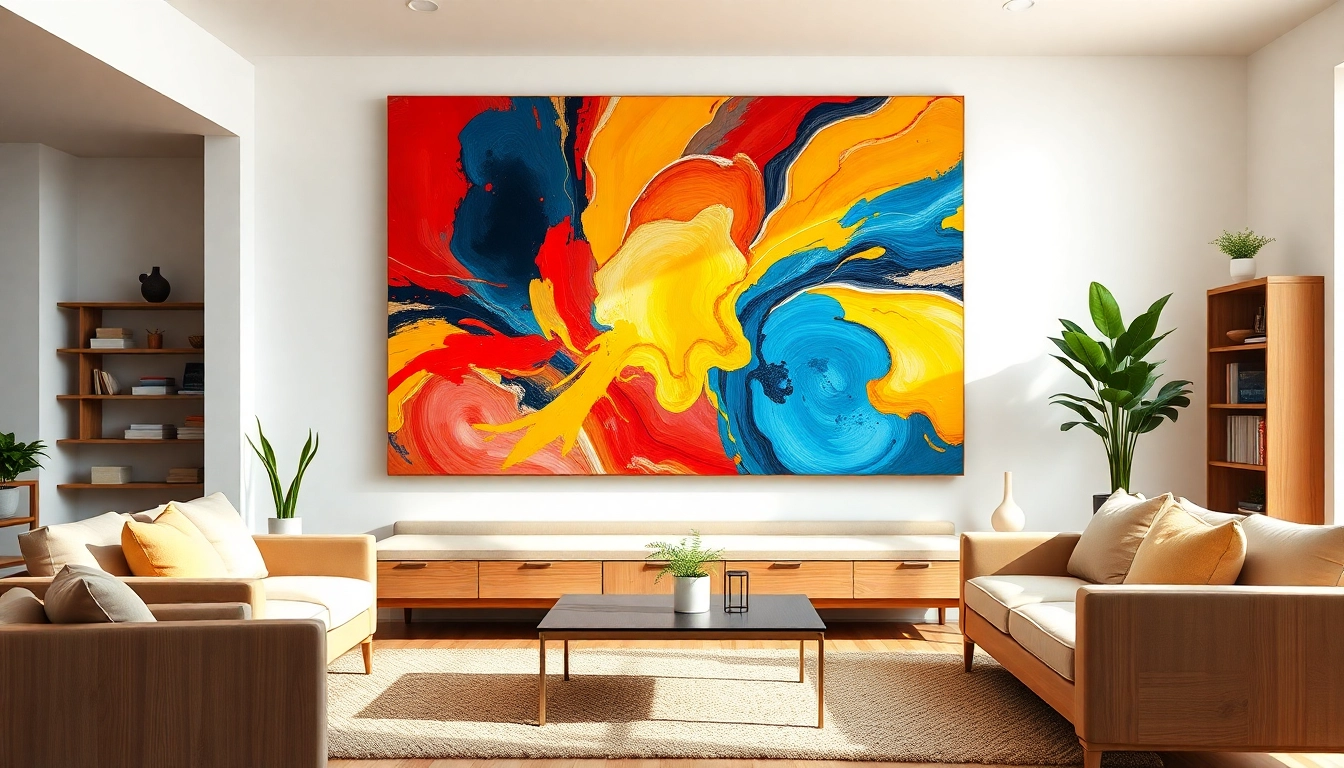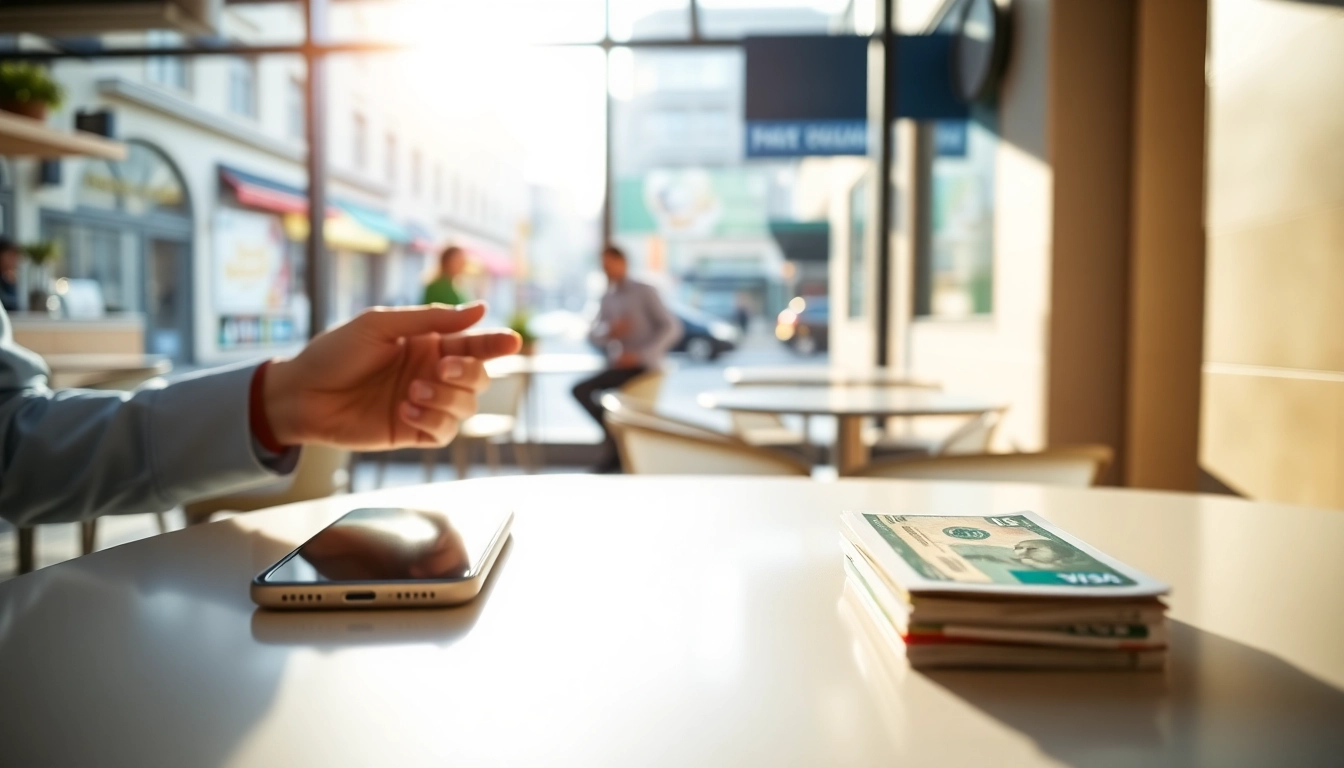Understanding Abstract Paintings Art
Defining Abstract Paintings Art
Abstract paintings art is a genre that transcends traditional representations of the visible world, focusing instead on colors, shapes, and forms to convey emotions and ideas. Instead of portraying a realistic depiction of objects or scenes, abstract art invites viewers to engage with the artwork on a more emotional and conceptual level. This artistic form encourages personal interpretation, making it unique to each observer.
Typically, abstract art emphasizes the visual aspects of painting, such as line, shape, color, and texture. Various techniques are often employed to create visuals that challenge conventional viewpoints, allowing for diverse interpretations. Some abstract painters aim to evoke specific feelings, while others may seek to represent their inner thoughts or experiences.
For those intrigued by abstract paintings art, the allure lies in its freedom and creativity, often blending reality with abstraction to create a new visual language. In essence, abstract art opens a door to a realm where viewers can connect with emotions that might be difficult to express verbally.
History of Abstract Art Movements
The history of abstract art is rich and varied, beginning in the late 19th and early 20th centuries. Early movements, like Impressionism, laid the groundwork by emphasizing light and color over detail, paving the way for post-Impressionist artists such as Vincent van Gogh and Paul Cézanne who experimented further with abstraction.
The early 20th century witnessed the birth of several key movements, including Cubism, pioneered by Pablo Picasso and Georges Braque. Cubism deconstructed objects into geometric shapes, providing new viewpoints and perspectives. Another significant movement was Expressionism, where artists like Wassily Kandinsky highlighted emotional experiences over representational accuracy, marking the true emergence of abstraction as a prominent art form.
As the century progressed, Abstract Expressionism gained traction in the 1940s and 50s, characterized by spontaneous, automatic, or subconscious creation. Iconic figures like Jackson Pollock and Mark Rothko became household names, with their works emphasizing fluidity and color in an emotive manner.
The latter half of the 20th century saw the rise of Minimalism and Conceptual art, moving towards simplicity and the idea behind the work, rather than the work itself. Today, abstract art continues to evolve, embracing digital mediums and mixed techniques while maintaining its core focus on emotion and interpretation.
Key Characteristics of Abstract Paintings Art
Understanding abstract paintings art involves recognizing several defining characteristics that set it apart from other art forms. These elements contribute to the uniqueness and complexity of each piece, inviting viewers to interpret them in personal ways. Here, we explore the key characteristics of abstract art:
- Use of Color: Abstract paintings often utilize color as a primary element, manipulating hues, saturation, and contrast to evoke emotions. Artists might employ vibrant colors to provoke excitement or soft pastels to create a sense of calm.
- Shape and Form: Unlike traditional art, abstract artworks may use distorted or unconventional shapes that do not reflect real-world forms. These shapes serve to bring out emotional responses, allowing for new experiences with art.
- Texture: Many abstract artists incorporate texture into their works, using thick layers of paint, mixed media, or other materials to create a sensory experience. Texture invites physical engagement, encouraging viewers to not only look but also feel the art.
- Composition: The arrangement of elements within an abstract painting can significantly influence its impact. Artists often experiment with balance, symmetry, and movement to guide the eye and evoke feelings.
- Emotion Over Representation: A primary focus in abstract paintings is to convey emotions rather than depict objects. The freedom to interpret the work serves as the heart of abstract art, empowering viewers to form connections based on personal experiences.
Choosing the Right Abstract Paintings Art for Your Home
Factors to Consider When Selecting Art
When choosing abstract paintings art for your home, several factors come into play to ensure that the artwork resonates with your space and personality. Here are key considerations:
- Size and Scale: Consider the dimensions of your wall and the scale of the artwork. Large canvases can create dramatic focal points, whereas smaller pieces may work better in clusters or enhance more intimate spaces.
- Color Palette: Think about the existing colors in your room. Select abstract artwork that either complements your decor or provides a striking contrast. The right color palette can unify your space or create interesting tension.
- Style and Theme: Reflect on the overall style of your home—modern, rustic, or eclectic—and choose abstract art that aligns with your aesthetic vision. Also, consider the emotional atmosphere you want to create; softer pieces may induce tranquility, while bold colors might energize a room.
- Personal Connection: Select artwork that resonates with you personally. Abstract art is often subjective; choose pieces that evoke emotions or thoughts significant to you.
Matching Abstract Paintings Art with Your Decor Style
Integrating abstract paintings art into your home decor can elevate your space and express your individuality. Here’s how to match art with different decor styles:
- Modern Minimalism: Opt for large, bold pieces with a limited color palette. Minimalist spaces benefit from simplistic designs that maintain openness without overwhelming the space.
- Bohemian: Embrace vibrant colors and eclectic shapes. Layer multiple abstract pieces to create visual interest and a sense of warmth and creativity.
- Rustic: Choose artwork that features earthy tones and organic forms. Abstract art that has a natural element can complement rustic finishes and textures effectively.
- Mid-Century Modern: Consider geometric patterns and retro-inspired colors. Abstract pieces reminiscent of this era can harmonize beautifully with iconic furniture designs.
Creating Focal Points with Large Abstract Art
Large abstract paintings art are ideal for creating focal points in any room. They can draw the eye and stimulate conversation. Here’s how to utilize large pieces effectively:
- Placement: Position large pieces above furniture, such as sofas or beds. This anchoring creates a cohesive look and offers a natural focal point.
- Unity with Accessories: Coordinate smaller decor elements such as throw pillows, vases, or rugs with colors or textures found in your large abstract painting. This harmonizes the space while allowing the artwork to shine.
- Gallery Walls: Pair large abstract art with smaller pieces to create a gallery wall. Vary the sizes and styles while ensuring a cohesive theme to maintain visual interest without clutter.
- Lighting: Proper lighting enhances the impact of large artwork. Use track lights or picture lights to highlight the piece and create depth.
Incorporating Abstract Paintings Art into Various Spaces
Living Rooms: Making a Statement with Art
The living room is often the centerpiece of any home, making it an ideal space for showcasing abstract paintings art. A statement piece can set the tone for the entire room:
- Bold Statements: Choose artwork that captures attention. A large, vibrant piece can draw guests into the room and spark discussions.
- Layering Art: Create a mix of artwork, including abstract pieces, photographs, and framed prints. This layering can create a curated, sophisticated look.
- Complementing Decor: Abstract art can tie together various elements in your living room, from color to texture. Choose pieces that resonate with your furnishings and overall design.
Abstract Paintings Art in Professional Workspaces
Incorporating abstract paintings art into professional spaces can enhance creativity and productivity. Here are ways to integrate art into your workplace:
- Inspiring Atmosphere: Select artwork that inspires your team. Dynamic, colorful pieces can stimulate creativity, while softer, serene artworks may promote calmness.
- Thoughtful Placement: Position abstract art in common areas and meeting rooms where it can be easily appreciated. Visible art can provide an invigorating backdrop to discussions and presentations.
- Branding Integration: Choose pieces that align with your company’s values and mission. Abstract art can communicate a modern, innovative image to clients and visitors.
Using Abstract Art in Bedroom Decor
The bedroom should be a sanctuary for rest and reflection, making the choice of art crucial to the ambiance. Abstract paintings art can play a pivotal role:
- Creating Serenity: Opt for soft colors and gentle shapes that evoke relaxation. Abstract art with soothing tones can enhance a peaceful atmosphere.
- Personal Touch: Include artworks that resonate on a personal level—pieces reflecting your experiences or dreams can add depth to your space.
- Balanced Composition: Ensure that your abstract art complements the overall decor without overwhelming it. Artworks should harmonize with bedding, curtains, and furniture to create a well-coordinated look.
Caring for Your Abstract Paintings Art
Best Practices for Maintenance and Cleaning
To maintain the longevity and beauty of abstract paintings art, proper care is essential. Here are some best practices for care and maintenance:
- Avoid Direct Sunlight: Direct sunlight can fade colors over time. Position artworks in locations where sunlight is minimal, or utilize UV-filtering glass in frames.
- Dust Regularly: Use a soft, dry cloth to dust paintings occasionally. Avoid cleaning agents that may damage the paint or surface finish.
- Temperature and Humidity Control: Maintain a consistent environment regarding temperature and humidity to prevent warping or damage to the artwork.
Framing Options for Lasting Quality
Choosing the right frame for your abstract paintings art can enhance its appeal and protect the piece. Consider the following framing options:
- Float Frames: These frames allow the artwork to appear as though it’s floating within the frame, providing a contemporary look that enhances abstract designs.
- Matting: Adding a mat can create a buffer between the artwork and frame, enhancing visibility and preventing direct contact.
- Quality Materials: Invest in high-quality frames that are acid-free and preserve the work’s integrity. Avoid cheap materials that may warp or discolor over time.
Environment Considerations for Artwork Preservation
Preserving abstract paintings art involves more than just cleaning; environmental conditions play a considerable role in longevity. Key considerations include:
- Controlled Climate: Aim for a stable environment free from extreme temperature changes. Ideal conditions typically range from 65°F to 75°F and moderate humidity levels.
- Avoid Moisture: Excess moisture can lead to mold or damage. Ensure your artwork is in a well-ventilated space to avoid trapped humidity.
- Proper Hanging: Use appropriate wall mounts and avoid hanging in areas with high traffic or where it may be easily bumped or damaged.
Trends in Abstract Paintings Art
Current Styles Dominating the Market
Abstract paintings art continues to evolve with trends influenced by societal shifts, technology, and cultural movements. Some current styles include:
- Geometric Abstraction: Featuring clean lines and shapes, geometric abstraction is popular for its modern aesthetic that appeals to minimalist designs.
- Layered Textures: Artists are employing innovative techniques to create rich, textured surfaces. This form blends various materials, providing depth and tactile interest.
- Digital Abstract Art: With advances in technology, digital tools are becoming a prevalent medium for abstract artists. Digital paintings allow for a fusion of traditional art styles with modern technology.
Innovative Techniques in Modern Abstract Art
Modern abstract painters are embracing creativity through innovative methods that challenge conventional practices. These techniques include:
- Mixed Media: Combining paint with other materials like fabric, paper, or found objects creates complex pieces full of vibrancy and depth.
- Interactive Elements: Some contemporary artists are incorporating interactive aspects, inviting viewers to engage physically or through augmented reality.
- Environmental Art: Abstract artists are increasingly using eco-friendly materials and practices, reflecting a growing concern for sustainability in the art world.
The Future of Abstract Paintings Art
The future of abstract paintings art appears promising, with continuous explorations of new mediums and themes. Artists will likely keep pushing boundaries, embracing technology while fostering a deeper connection with emotions and personal narratives. As abstract art evolves, it will remain a vital expression of human creativity, inviting audiences to interpret and engage with art in meaningful ways.




